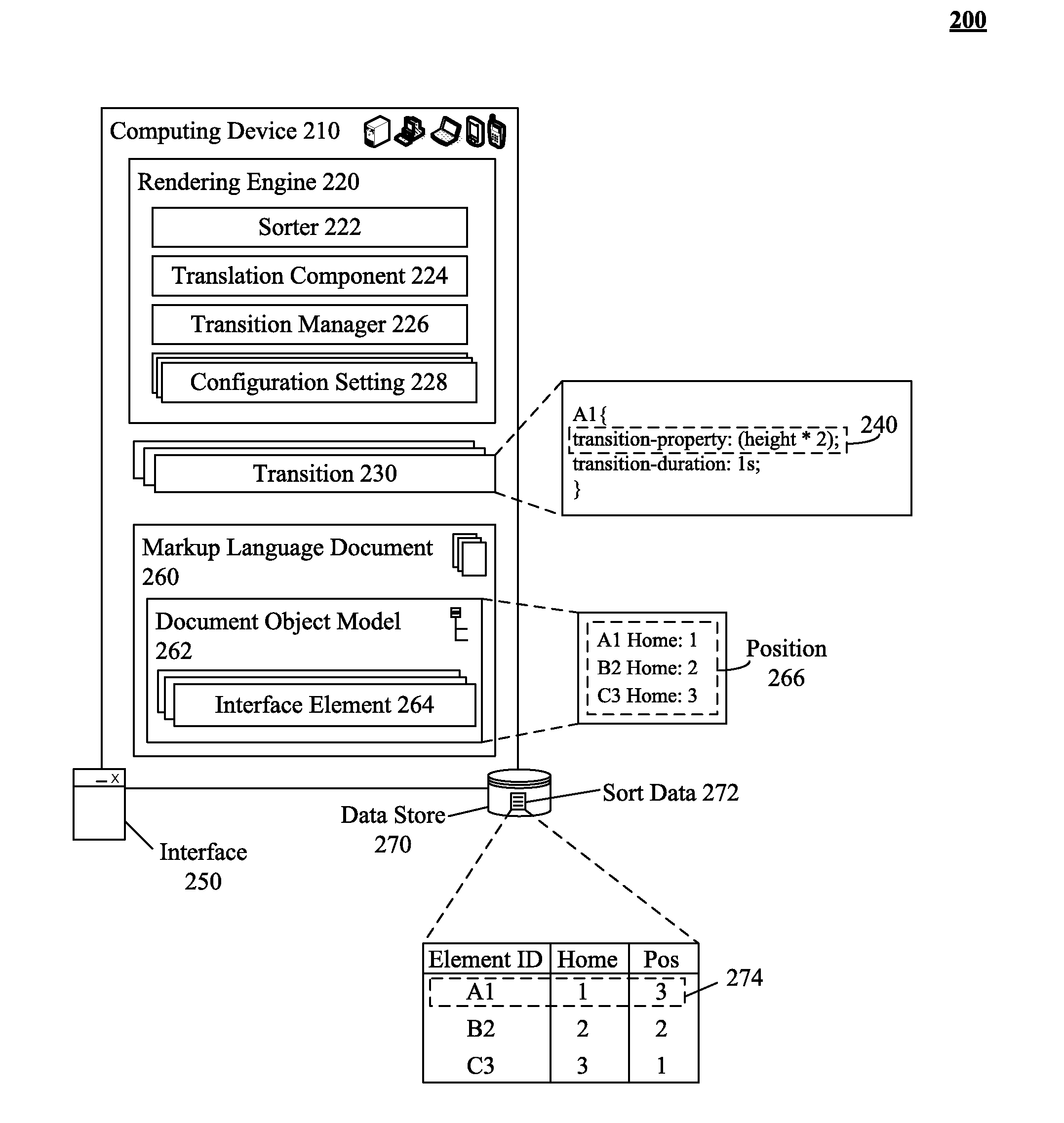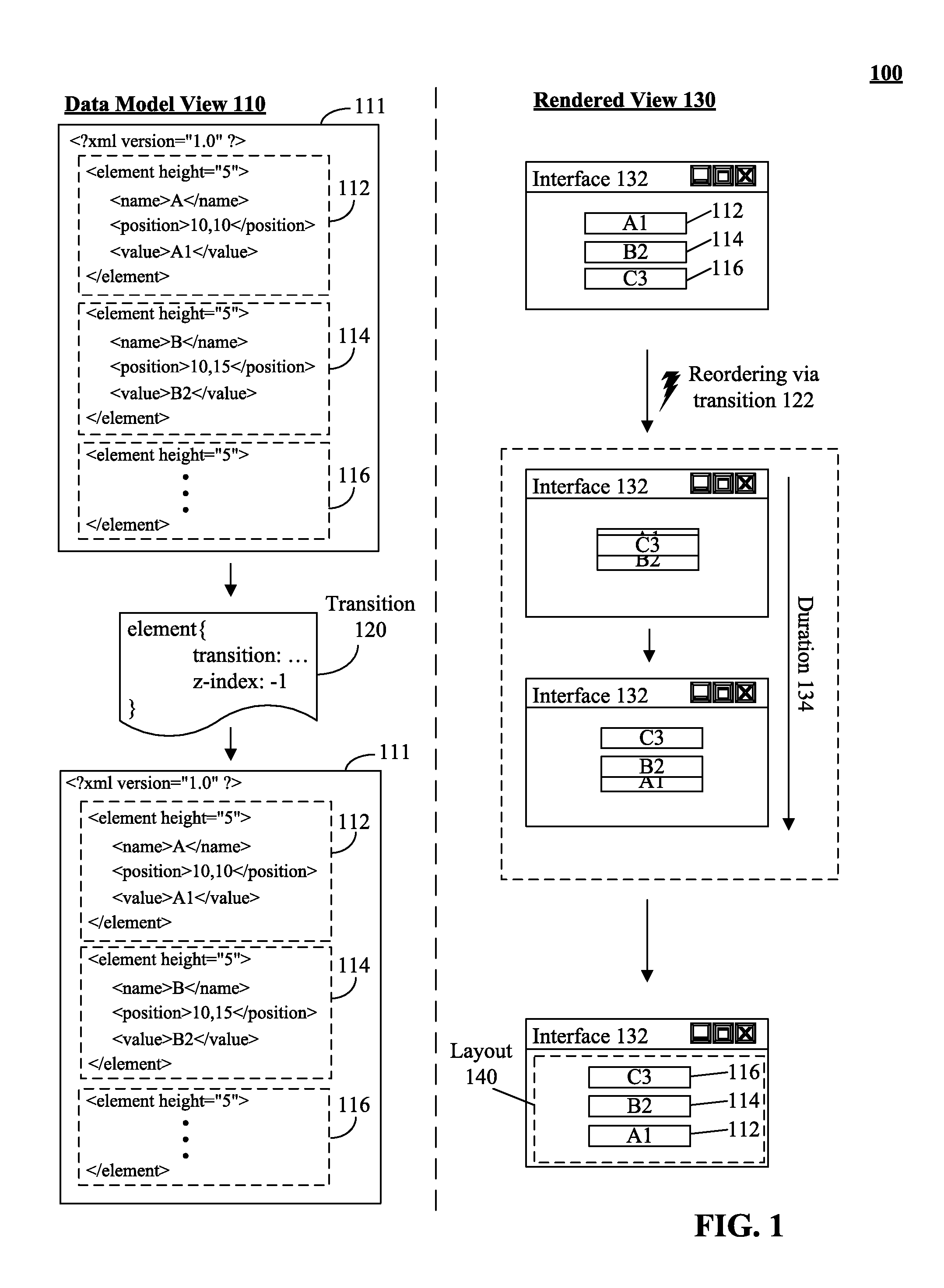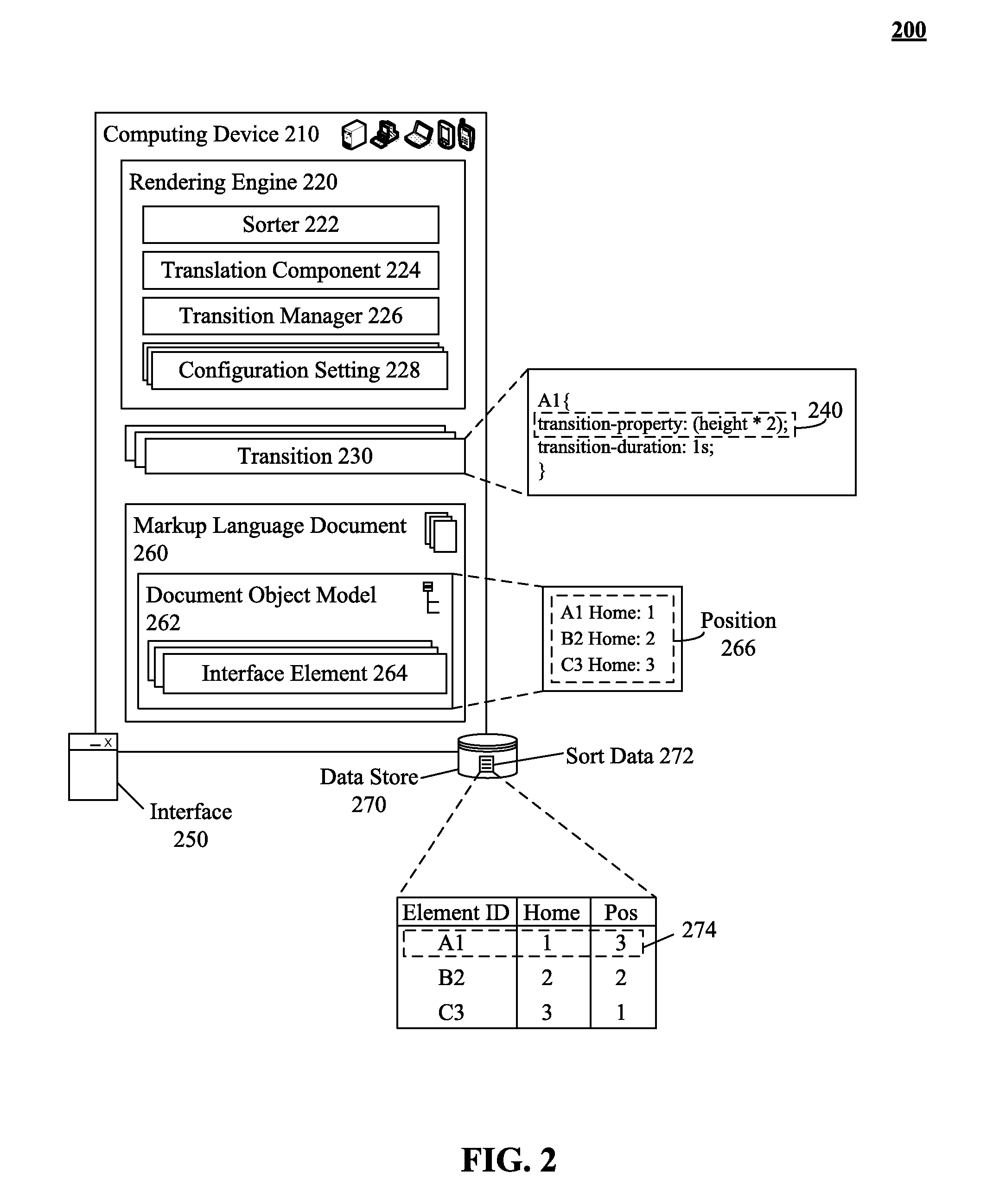Utilizing a graphical transition to sort an interface element independently of a document object model
a document object model and interface element technology, applied in the field of graphical effects and replacement or sorting of visual information, can solve problems such as further compounding of problems
- Summary
- Abstract
- Description
- Claims
- Application Information
AI Technical Summary
Benefits of technology
Problems solved by technology
Method used
Image
Examples
Embodiment Construction
[0009]The present disclosure is a solution for utilizing a graphical transition to manipulate an interface element independent of a document object model. In the solution, a graphical transition effect can be performed to alter the visual presentation of interface elements of a markup language document (e.g., Web page). The visual presentation can include, element ordering, element position, and the like. For example, a traditional element sort functionality can be “short circuited” by visually sorting elements without manipulating the document object model (DOM) structure. In one embodiment, a Cascading Style Sheet transition effect can be utilized to dynamically alter the visual presentation of interface elements in a Web page. In the embodiment, an element (e.g., ) can be repositioned using an offset value (e.g., margin-left: −35px) from a home position of the element via the transition effect properties.
[0010]As will be appreciated by one skilled in the art, aspects of the prese...
PUM
 Login to View More
Login to View More Abstract
Description
Claims
Application Information
 Login to View More
Login to View More - R&D
- Intellectual Property
- Life Sciences
- Materials
- Tech Scout
- Unparalleled Data Quality
- Higher Quality Content
- 60% Fewer Hallucinations
Browse by: Latest US Patents, China's latest patents, Technical Efficacy Thesaurus, Application Domain, Technology Topic, Popular Technical Reports.
© 2025 PatSnap. All rights reserved.Legal|Privacy policy|Modern Slavery Act Transparency Statement|Sitemap|About US| Contact US: help@patsnap.com



